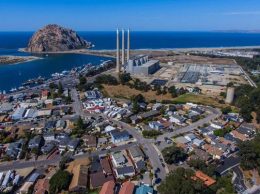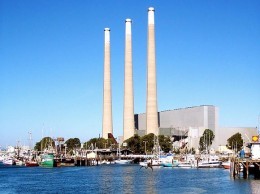Steve Gill, president and co-founder of Gills Onions in Oxnard, said at an energy sustainability seminar in Westlake Village Oct. 23 that the next big technology push for his company will be to convert solid onion waste into methane gas to be sold as biomethane.
That is a product that will be in demand as companies are required to shift to green energy sources to comply with California’s Global Warming Solutions Act by the year 2020.
Gills Onions has won acclaim for its innovative process to convert onion waste into electricity. That process, using onion juice instead of solid onion waste, produces 640 kilowatts of power, enough to supply the base energy needs of the company’s processing plant in Oxnard. The company recently added a huge flow battery system using vanadium technology to store the energy output for use during peak daytime demand. Gill said the battery unit, designed and built for Gills Onions by Prudent Energy, is the first of its kind and the largest in the world.
Gill explained the waste-to-electricity process at a sustainability seminar hosted by the Valdez Wealth Management Group at UBS Financial Services offices in Westlake Village. He outlined his firm’s interest in biomethane in response to a question from one of the attendees.
“The next project we’re looking at is to use whole solids digestion,” Gill said. Solid onion waste would be put in a tank, where it would be digested by anaerobic bacteria over about 25 days. The process would produce methane gas that would then be cleaned up and sold as biomethane. The green energy gas is worth about $12 to $14 a therm compared to about $3.50 for natural gas, Gill said.
Some companies will be in the market to purchase biogas by 2020 under the cap and trade provisions of California’s AB32.
The solid waste-to biogas system would use technology similar to the system Gill developed to convert onion waste into electricity. In that process, the juice is extracted from about 200,000 pounds of onion waste per day, stripped of sulfur content and digested by anaerobic bacteria in a huge tank. Biogas is released, blended with natural gas and sent through fuel cell stacks where it is converted into electricity.
The 640 kilowatts of power is enough to supply 460 California homes with electricity, Gill said.
The small amount of solid waste remaining is reduced into press cake and used as a component in cattle feed.
It took about 10 years to turn the concept into a working system with an investment of $10.8 million, Gill said. The project was helped along with a $3.2 million grant in lieu of an energy tax credit and $2.7 million from the state Self Generation Incentive Program. Savings on peak demand electricity and onion waste disposal costs are about $800,000 a year, Gill said. He expects a payback on investment in six years.
Gills Onions, founded 30 years ago by Steve and his brother David, is one of the largest private companies in the Tri-Counties, with 350 employees and revenues of $50 million. It has won wide recognition for its sustainability technology, including being named Technologist of the Year for 2013 by the Cal State Channel Islands Business & Technology Partnership.
“I didn’t even go into it for that,” Gill said of the recognition. “I was just trying to solve a problem, and this is what I did.”






 Print
Print Email
Email

















